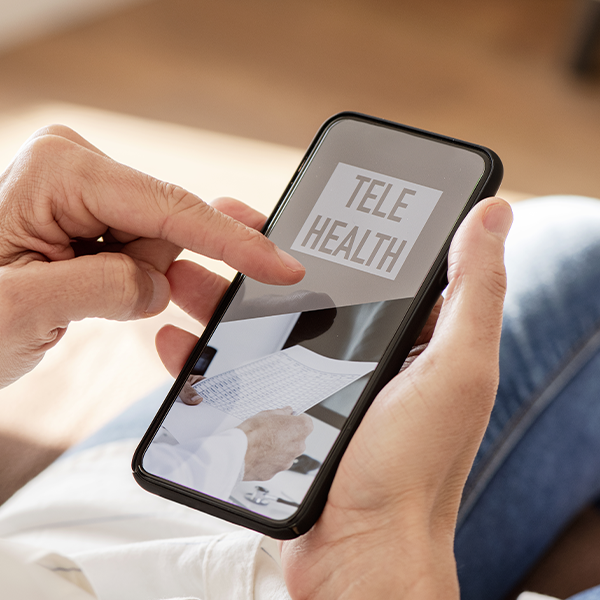In the wake of the COVID-19 health crisis, telehealth visits are exploding. Appointments among Medicare patients jumped from approximately 13,000 per week before the pandemic to almost 1.7 million a week by the end of April.1 MultiPlan’s own telemedicine claim volume surged 2,500% from mid-March through the end of July.
Telehealth Drivers
In early March, CMS temporarily expanded Medicare access to telehealth to encourage its use. Changes included:
- The type of location where patients can receive telehealth has increased.
- More platforms or devices have been approved for use to conduct the appointment.
- The number of services that Medicare patients can receive via telehealth has more than doubled.
- Providers can be paid their in-office rates for telehealth services.
- A wider range of practitioner types can now offer telehealth, including occupational therapists and speech language pathologists.
Additionally many insurers have waived fees to encourage its use.

Providers Response to Telehealth
In a recent survey of individual practitioners who participate in MultiPlan’s networks, more than 93% of respondents said they currently offer telehealth. The percentage is even higher among practitioners in a group practice; almost 95% of these respondents say someone in their practice offers telehealth services.
Enthusiasm for continuing telehealth services after the pandemic ends wasn’t as high, however. Almost 68% of respondents indicated they will continue to offer telehealth after the pandemic, and more than 32% said they were offering telehealth only as a temporary measure to address COVID-19.
Those who plan to continue offering the service cited its convenience and noted it as a good alternative for aging or disabled patients who are unable to drive. Other providers enjoy the flexibility it offers in terms of the hours they can work and their availability to respond to urgent needs. Some providers noted that cancelled appointments and no-shows are extremely rare for those with scheduled telehealth appointments.
Among those who don’t plan to continue offering telehealth, there was a sentiment that it wasn’t the best care, but it was better than no care and therefore a viable alternative during the COVID-19 crisis. Some providers were dissuaded of continuing use of the technology because of the inability to conduct a physical exam. Several respondents wanted to see whether insurance companies will continue to cover telehealth services at the same level as face-to-face encounters before committing to continuing the service.
“Prior to the pandemic, scope of payment coverage was the major determinant to telehealth for most providers and this will remain the case,” said Dr. Anthony Sposato, MultiPlan’s Corporate Medical Director. “The forced usage related to the COVID-19 pandemic certainly was an unanticipated kick-start to get providers incorporating telemedicine into their practice. Some specialties are better suited for it, and this will influence to what extent it remains. My sense is that as time goes on we will see Telemedicine use draw back from the high point during the Pandemic but adoption and use will stay well above where it was pre-COVID.”

Patients’ Response to Telehealth
Patients are finding value in the telehealth appointments. In a survey of MultiPlan employees who have had a telehealth appointment, 93% of respondents said the experience was meaningful, and 96% said they would use it again. Several respondents praised the convenience of telehealth, saying it saved travel time and they could attend the appointments during breaks without taking time off work. They also mentioned it was a convenient alternative when they felt too sick to travel to an appointment.
However, respondents did note the inherent limitations of these type of appointments make them useful only for specific purposes, such as simple check-ups, follow-ups, reviewing lab results, or refilling prescriptions.
The respondents who don’t plan to use telehealth again expressed concern that the quality of care wasn’t the same as an in-person visit. They pointed out that they couldn’t have lab tests performed, be physically examined, or have their blood pressure or temperature checked and were skeptical a proper diagnosis could be reached without a hands-on exam.
Technology and connection issues also dampened enthusiasm for telehealth. Approximately 20% said they had an issue, and 6% said they were unable to finish the appointment.
As some providers are waiting to find out how insurance will cover telehealth in the future, some patients mentioned they will wait to see if the copays are lower than in person visits before committing to post-pandemic appointments.

The Future of Telehealth
While it’s unclear if telehealth’s popularity will continue after the pandemic, all signs indicate that its use will be more frequent than it was prior to COVID-19. Even before the public health emergency, telehealth was gaining traction. In 2019, Medicare began paying for virtual check-ins, which are short patient-initiated communications with a healthcare practitioner. In 2020 before COVID-19, Medicare started paying clinicians for e-visits — non-face-to-face, patient-initiated communications through an online patient portal. These moves helped loosen restrictions when the pandemic began. Telehealth’s popularity will be impacted by which, if any, of the changes made during the COVID-19 crisis are allowed to continue after it ends.
Payment also will be a significant factor in determining telehealth’s future. According to a December 2019 report by Foley & Lardner LLP, an international law firm, only 10 states require true “payment parity,” meaning they require health insurers to pay the same rates for telehealth and in-person services. The law firm forecasts that other states will soon begin enacting new telehealth insurance coverage and payment parity laws or amending current laws to better account for the current state of telehealth.2 To the extent that these new and revised laws introduce payment parity, providers disinclined to participate may be more enthusiastic and payors inclined to encourage its use may be less enthusiastic.
Similarly, according to AHIP, many private health insurers have waived copays and other cost sharing for telemedicine during the public health emergency. If the costs are reinstated after the pandemic, patients may become less enthusiastic about telehealth.
Finally, CMS also states a key to expanding telehealth relies on its ability to address the potential for fraud and abuse. Using our Payment Integrity services, MultiPlan has found some issues with telehealth claims, for example billing for services that can’t occur via telehealth, such as acupuncture. We are keeping a log of the types of issues we find on both telehealth and COVID-19 claims so that our clients don’t overpay.
1. Health Affairs, July 15: Early Impact Of CMS Expansion Of Medicare Telehealth During COVID-19
https://www.healthaffairs.org/do/10.1377/hblog20200715.454789/abs/
2. 50-State Survey of Telehealth Commercial Payer Statutes, December 2019 FOLEY.COM/TELEMEDICINE
KH045 2020-10-01

